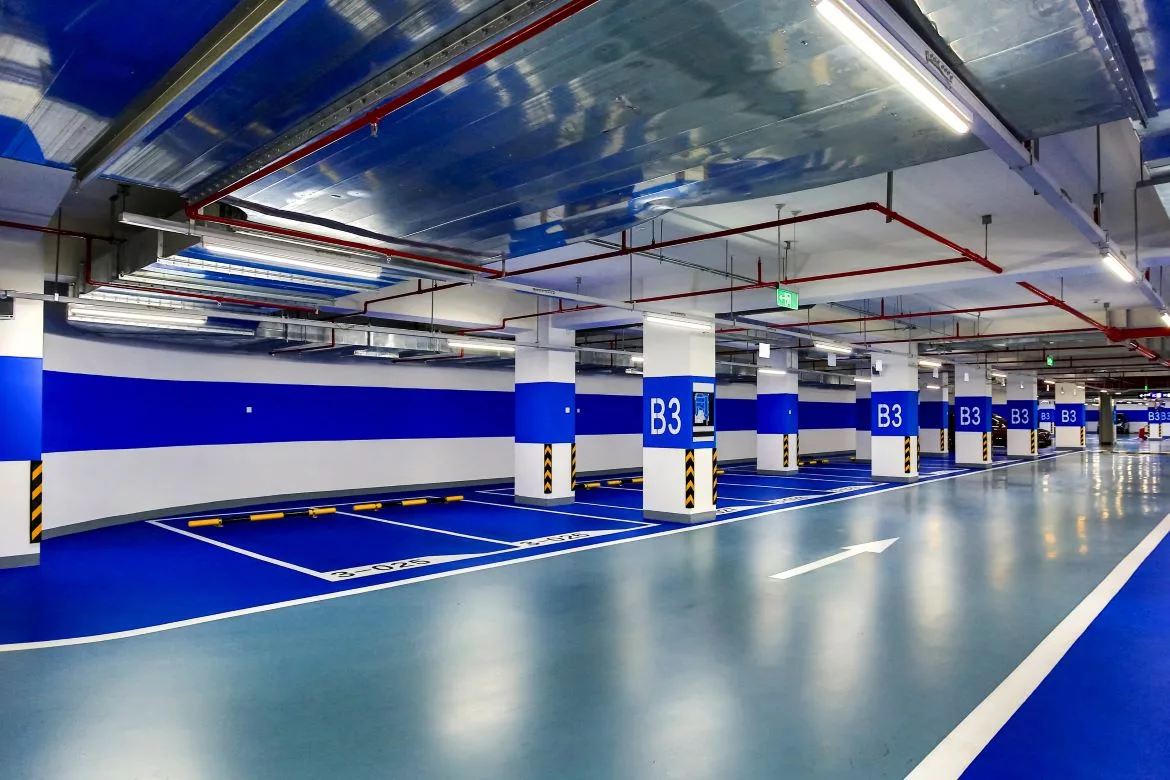A Primer to Using Polyaspartic as a Floor Coating

Credit: zhangxiaomin, iStock, via Getty Images
Polyaspartic coatings have come a long way. After a rough rollout in the 1990s, subsequent formulations have proven to be some of the most durable, versatile and environmentally friendly floor coatings on the market. In fact, they might be today’s gold standard when it comes to coatings!
So what makes them so good, and how do they compare to other coatings? Let’s go over the basics first, and then get into some comparisons.
What are Polyaspartic Coatings?
A polyaspartic coating - technically, a polyaspartic aliphatic polyurea - is a mixture of an amine-terminated polyether and an aliphatic (as opposed to aromatic) isocyanate. Polyureas (including polyaspartics) are a type of polyurethane. Like epoxies, they’re two-component coatings. When the two components mix, they rapidly cure; in the case of non-polyaspartic polyurea coatings, that cure time is almost instantaneous, so application requires special equipment and training.
Polyaspartics, though, offer all the advantages of conventional polyurea coatings, but with a much slower cure time. In fact, polyureas cure so quickly that there’s little room for error, where a polyaspartic may take a day to cure. The result is a coating that’s easy to apply and consistently outperforms older coatings like polyurethanes and epoxies. They’re also very low to zero VOC, so they can be used safely in enclosed spaces.
Polyaspartic coatings also have high elasticity along with excellent surface hardness, which makes them popular for use in garages and industrial settings, as well as restaurants and food prep areas.
The Advantages of Polyaspartic Coatings
Arguably, the biggest advantage of polyaspartic coatings is the cure time. Some polyaspartics can be put down in a single coat, instead of the multiple coats required by other coatings. Even polyaspartics that require multiple coats can be done in a day, with primers that are tack-free in less than an hour, a midcoat that cures in an hour, and a topcoat that cures in less than four hours.
They cure so fast, in fact, that they can stand up to heavy vehicle traffic just 24 hours after application. Contrast that to an epoxy, which puts a space out of commission for several days, if not a full week, while they cure.
That fast cure also confers another big benefit. Polyaspartics don’t cure by temperature or humidity, like many conventional coatings - the “curing” is actually a chemical cross-linkage of the two components. That means you can apply a polyaspartic coating in nearly any season, no matter the temperature or humidity, without worrying about coating failure.
Polyaspartics are extremely durable, too, resistant to impact, abrasion, stains, acids and chemicals. They have high UV stability, so they won’t yellow or degrade, even if exposed to sustained direct sunlight. And finally, because they’re a high solids coating, they emit very little VOCs, if any, and are low-odor, too.
Alternatives to Polyaspartic Coatings - and How They Measure Up
Epoxy coatings are very common floor coatings, are inexpensive, and can perform well under tough circumstances. But they have a few drawbacks compared to polyaspartics. They’re pretty brittle, which leaves them vulnerable to fracturing if the substrate shifts, and exposure to UV radiation makes them fade and break down. They’re also very slick, so an anti-slip additive is a must. And they have a really long cure time, often taking up to a week to fully set.
Polyurethane coatings are acid- and chemical-resistant, and offer great all-around durability. They’re also much more flexible than epoxies, so if the substrate shifts, a polyurethane can bend and shift along with it, instead of cracking.
The big drawback of polyurethane coatings is that it’s extremely sensitive to humidity during application, and can fail if conditions aren’t just right. That, along with a very fast cure time, is a big reason that most experts recommend you get professionals to apply your polyurethane coating.
Polyurea coatings have a lot in common with polyaspartics (technically, polyaspartics are a subcategory of polyureas), but have some unique characteristics that set them apart. Polyureas offer similar flexibility and durability, but with unmatched resistance to moisture. That’s made them very popular for use in water facilities and pipelines. They’re also a little more complicated to apply than polyaspartics.
In summary, polyaspartic coatings offer most of the advantages of these coatings - high durability and flexibility, a full spectrum of resistances, low VOCs, and easy application - without the drawbacks of long cure times and the need for professional applicators. If you need a coating for anything from a commercial kitchen, to a high-traffic concrete parking garage, to an outdoor industrial complex, it’s hard to do better than a good polyaspartic coating - and easy to do worse.
Looking for a reprint of this article?
From high-res PDFs to custom plaques, order your copy today!





